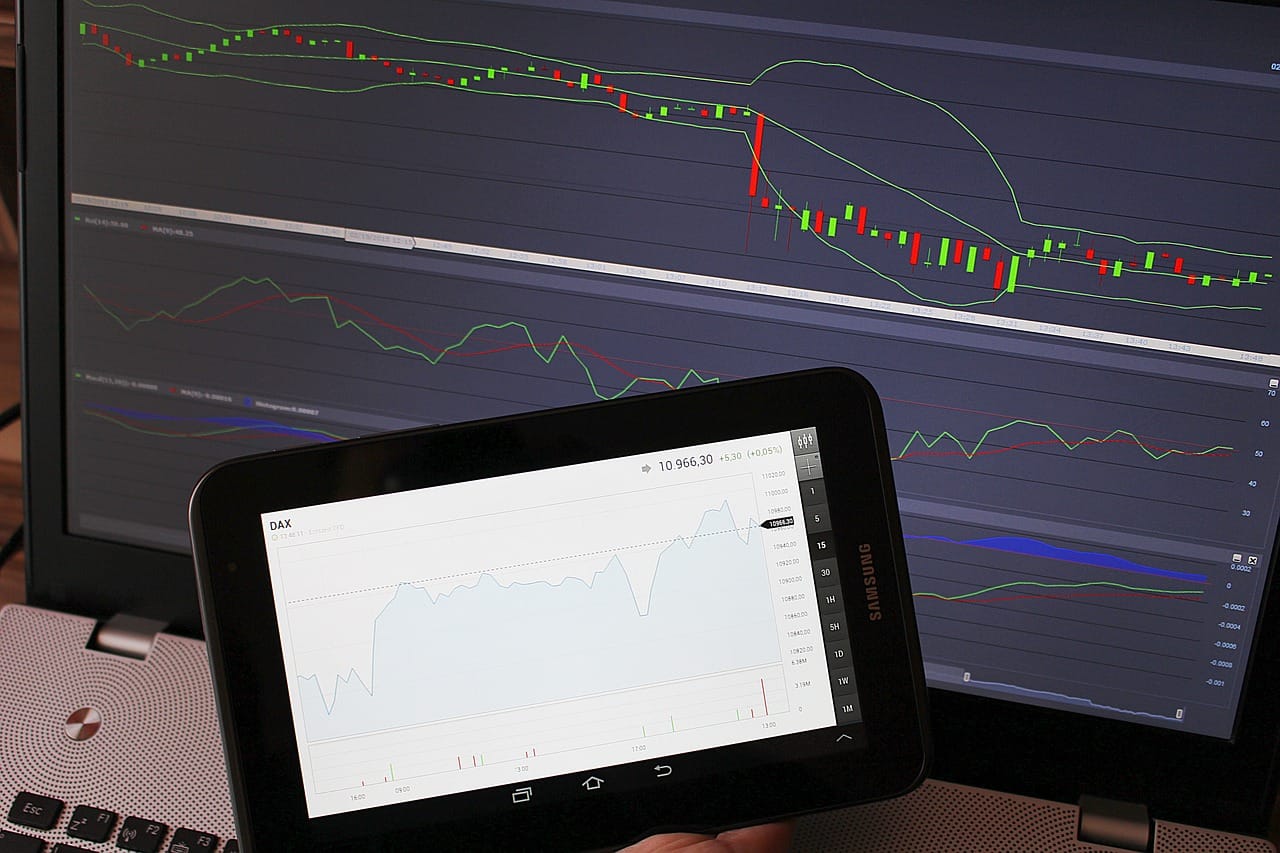A Beginner's Guide to Navigating the Foreign Exchange Market
Embark on the foreign exchange market journey with this beginner's guide. Explore insights, strategies, and fundamental principles to navigate the complexities of forex trading, empowering informed decision-making in this dynamic market

Introduction to the foreign exchange market

The foreign exchange market, also known as forex, is a decentralized global market where currencies are traded. It is the largest and most liquid financial market in the world, with an average daily trading volume of over $5 trillion. Forex trading involves buying one currency and selling another simultaneously, with the aim of profiting from the fluctuations in exchange rates.
Forex trading offers numerous benefits, including high liquidity, 24-hour accessibility, and the potential for significant profits. However, it is essential for beginners to understand the basics of forex trading before diving into the market.
Understanding the basics of forex trading
Before getting started in the foreign exchange market, it is crucial to understand the basic concepts and terminologies. The first concept to grasp is currency pairs, which represent the value of one currency relative to another. For example, the EUR/USD currency pair represents the euro against the US dollar.
Another fundamental aspect of forex trading is leverage. Leverage allows traders to control larger positions with a smaller amount of capital. While leverage can amplify profits, it also increases the risk of losses. Therefore, it is essential to use leverage wisely and have a solid risk management strategy in place.
Benefits of trading in the forex market
Trading in the forex market offers several advantages that make it an attractive option for beginners. Firstly, the forex market is highly liquid, meaning that there is always a buyer and a seller for any currency pair. This ensures that traders can enter or exit trades at any time without difficulty.
Additionally, the forex market operates 24 hours a day, five days a week. This accessibility allows traders to participate in the market at their convenience, regardless of their time zone. Furthermore, the forex market has low barriers to entry, allowing beginners to start trading with relatively small amounts of capital.
Factors that influence foreign exchange rates
Foreign exchange rates are influenced by a variety of factors, including economic indicators, geopolitical events, and market sentiment. Economic indicators, such as interest rates, inflation rates, and GDP growth, can have a significant impact on currency values.
Geopolitical events, such as elections, geopolitical tensions, and trade disputes, can also cause currency fluctuations. For example, if there is uncertainty surrounding the outcome of an election, the currency of that country may weaken as investors become cautious.
Market sentiment, or the overall attitude of traders towards a particular currency, can also affect exchange rates. Positive sentiment can lead to a strengthening of a currency, while negative sentiment can cause it to weaken.
Different types of currency pairs in forex trading

In forex trading, currency pairs are categorized into three main types: major pairs, minor pairs, and exotic pairs. Major pairs consist of the most widely traded currencies, such as the EUR/USD, GBP/USD, and USD/JPY. These pairs have high liquidity and are generally less volatile than the other types.
Minor pairs, also known as cross pairs, do not involve the US dollar. Examples include the EUR/GBP and GBP/JPY. These pairs can be more volatile than major pairs and may have wider spreads.
Exotic pairs involve a major currency and a currency from an emerging or smaller economy. Examples include the USD/MXN (US dollar vs Mexican peso) and USD/TRY (US dollar vs Turkish lira). Exotic pairs tend to have lower liquidity and higher spreads, making them more suitable for experienced traders.
How to read forex charts and analyze market trends
Forex charts are graphical representations of currency price movements over time. They provide valuable information to traders, allowing them to analyze market trends and make informed trading decisions. There are several types of forex charts, including line charts, bar charts, and candlestick charts.
Line charts display the closing prices of currency pairs over a specified period. They provide a simplified view of price movements but may not show the full picture of market dynamics.
Bar charts, on the other hand, show the high, low, open, and close prices for each time period. They provide more detailed information and are commonly used by traders to identify support and resistance levels.
Candlestick charts are similar to bar charts but offer a visual representation of market sentiment. Each candlestick represents a specific time period and shows the opening, closing, high, and low prices. The color of the candlestick indicates whether the price increased or decreased during that period.
To analyze market trends, traders often use technical analysis tools, such as moving averages, trend lines, and indicators. These tools help identify patterns and potential entry or exit points in the market.
Essential tools and resources for forex trading beginners
As a beginner in forex trading, it is essential to have the right tools and resources at your disposal. Firstly, you will need a reliable trading platform that provides access to real-time market data, charting capabilities, and order execution.
Additionally, educational resources are crucial for learning the ins and outs of forex trading. Online courses, webinars, and e-books can provide valuable insights into trading strategies, risk management, and market analysis.
Demo accounts are another valuable tool for beginners. These accounts allow you to practice trading with virtual money in a simulated trading environment. They offer a risk-free way to test your trading strategies and gain experience before trading with real money.
Common forex trading strategies for beginners
There are several common trading strategies that beginners can consider when starting in the forex market. One popular strategy is trend following, which involves identifying and trading in the direction of the prevailing market trend. Traders can use technical indicators, such as moving averages, to identify trends and potential entry or exit points.
Another strategy is range trading, which involves identifying price levels where the currency pair tends to trade within a range. Traders can buy at the bottom of the range and sell at the top, taking advantage of price reversals.
Breakout trading is another strategy that involves trading the currency pair when it breaks out of a predefined range. Traders can enter a long or short position depending on the direction of the breakout.
It is important to note that no trading strategy is foolproof, and losses are a part of trading. Therefore, it is crucial to have a risk management plan in place and to never risk more than you can afford to lose.
Choosing a reliable forex broker

Choosing a reliable forex broker is crucial for a successful trading experience. There are several factors to consider when selecting a broker, including regulation, trading platform, spreads, customer support, and educational resources.
Regulation is one of the most important factors to consider. A regulated broker is subject to strict guidelines and oversight, providing a level of security for your funds. Look for brokers regulated by reputable financial authorities, such as the Financial Conduct Authority (FCA) in the UK or the National Futures Association (NFA) in the US.
The trading platform should be user-friendly, stable, and provide access to a wide range of trading instruments. It should also offer advanced charting capabilities and technical analysis tools.
Spreads, or the difference between the bid and ask price, can significantly impact your trading costs. Look for brokers that offer competitive spreads, especially for the currency pairs you intend to trade.
Customer support is another important consideration. A reliable broker should offer responsive customer support that is available 24/7. This ensures that you can get assistance whenever you need it.
Risk management in forex trading
Risk management is a crucial aspect of forex trading that beginners must understand and implement. It involves taking measures to protect your trading capital and minimize potential losses. Here are some key risk management techniques:
- Use proper position sizing: Determine the appropriate lot size for each trade based on your risk tolerance and account balance. Avoid risking more than a certain percentage of your account on any single trade.
- Set stop-loss orders: A stop-loss order is an order placed to automatically close a trade if the price reaches a certain level. This helps limit potential losses and prevents emotional decision-making.
- Diversify your portfolio: Avoid putting all your eggs in one basket by trading multiple currency pairs. Diversification can help spread risk and minimize the impact of a single trade on your overall portfolio.
- Keep emotions in check: Emotions can cloud judgment and lead to impulsive trading decisions. Stick to your trading plan and avoid making impulsive trades based on fear or greed.
Forex trading mistakes to avoid
As a beginner in forex trading, it is important to be aware of common mistakes that can undermine your trading success. Here are some mistakes to avoid:
- Lack of education: Forex trading requires a solid understanding of the market and trading strategies. Investing time in education and continuous learning is crucial for success.
- Overtrading: Trading too frequently or with excessive leverage can lead to significant losses. Be selective with your trades and avoid overexposure.
- Ignoring risk management: Failing to implement proper risk management techniques can result in substantial losses. Always prioritize risk management and protect your capital.
- Chasing losses: Trying to recover losses by taking impulsive trades can lead to further losses. Accept losses as a part of trading and stick to your trading plan.
Conclusion: Getting started in the foreign exchange market
Forex trading can be a rewarding endeavor for beginners, but it requires dedication, education, and proper risk management. By understanding the basics of forex trading, analyzing market trends, and choosing a reliable broker, beginners can navigate the foreign exchange market with confidence.
Remember to start with a demo account to practice your trading strategies and gain experience before trading with real money. Always prioritize risk management and avoid common trading mistakes. With persistence and the right mindset, you can embark on a successful forex trading journey.




